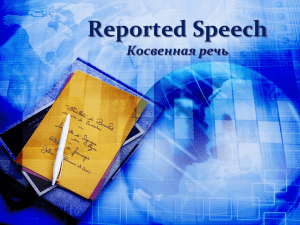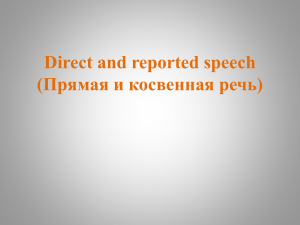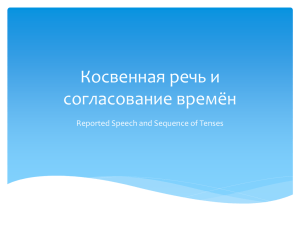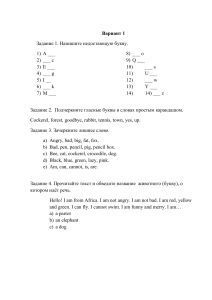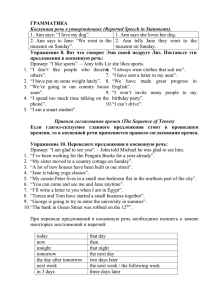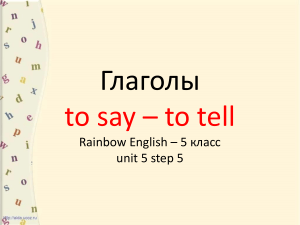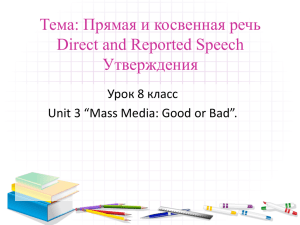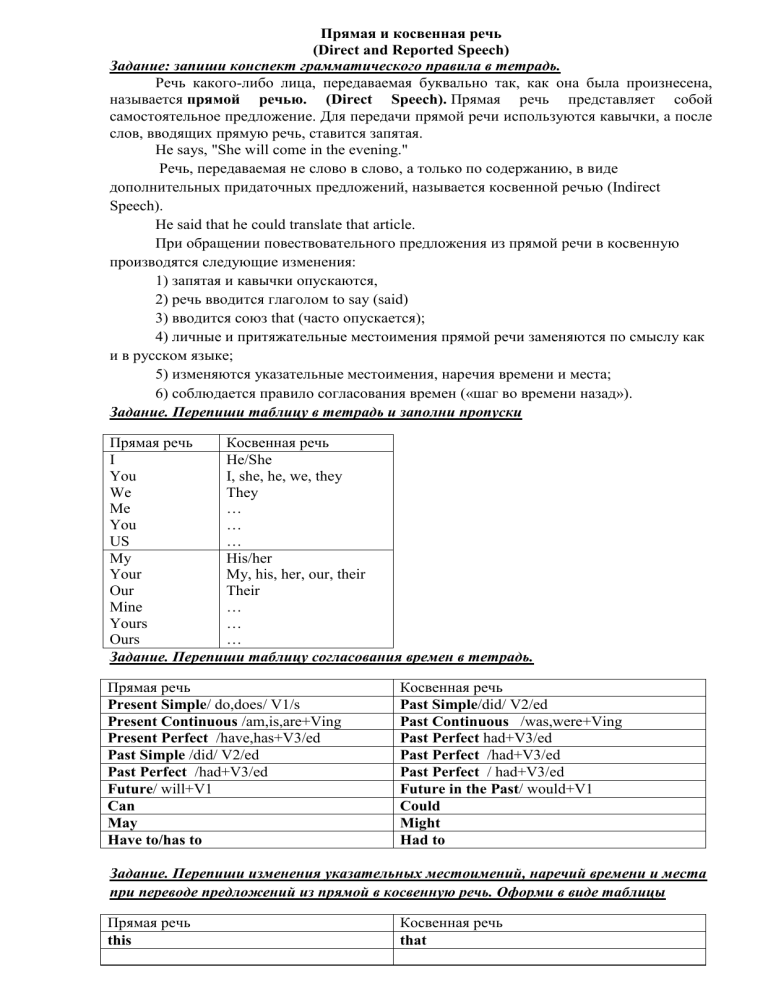
Прямая и косвенная речь (Direct and Reported Speech) Задание: запиши конспект грамматического правила в тетрадь. Речь какого-либо лица, передаваемая буквально так, как она была произнесена, называется прямой речью. (Direct Speech). Прямая речь представляет собой самостоятельное предложение. Для передачи прямой речи используются кавычки, а после слов, вводящих прямую речь, ставится запятая. Не says, "She will come in the evening." Речь, передаваемая не слово в слово, а только по содержанию, в виде дополнительных придаточных предложений, называется косвенной речью (Indirect Speech). Не said that he could translate that article. При обращении повествовательного предложения из прямой речи в косвенную производятся следующие изменения: 1) запятая и кавычки опускаются, 2) речь вводится глаголом to say (said) 3) вводится союз that (часто опускается); 4) личные и притяжательные местоимения прямой речи заменяются по смыслу как и в русском языке; 5) изменяются указательные местоимения, наречия времени и места; 6) соблюдается правило согласования времен («шаг во времени назад»). Задание. Перепиши таблицу в тетрадь и заполни пропуски Прямая речь Косвенная речь I He/She You I, she, he, we, they We They Me … You … US … My His/her Your My, his, her, our, their Our Their Mine … Yours … Ours … Задание. Перепиши таблицу согласования времен в тетрадь. Прямая речь Present Simple/ do,does/ V1/s Present Continuous /am,is,are+Ving Present Perfect /have,has+V3/ed Past Simple /did/ V2/ed Past Perfect /had+V3/ed Future/ will+V1 Can May Have to/has to Косвенная речь Past Simple/did/ V2/ed Past Continuous /was,were+Ving Past Perfect had+V3/ed Past Perfect /had+V3/ed Past Perfect / had+V3/ed Future in the Past/ would+V1 Could Might Had to Задание. Перепиши изменения указательных местоимений, наречий времени и места при переводе предложений из прямой в косвенную речь. Оформи в виде таблицы Прямая речь this Косвенная речь that 1.this - that (этот – тот) 2.these - those (эти – те) 3.here - there (здесь, сюда – там) 4.now - then (сейчас – тогда) 5.ago - before (тому назад – раньше) 6.today - that day (сегодня - в тот день) 7.tomorrow - the next day (завтра - на след. день) 8.next week/year - the following week/year 9.yesterday - the day before (вчера – накануне) 10.the day after tomorrow - two days later (послезавтра - через два дня) 11.last morning - the previous morning (вчера утром - прошлым утром) Алгоритм перевода предложений из прямой в косвенную речь. He said, “My brother is watching TV now.” 1. Найди грамматическую основу предложения. Помни, что в английском предложении прямой порядок слов. He said, “My brother is watching TV now.” 2. Определи время в предложении и найди его в таблице согласования времен. is watching - Present Continuous – меняем на Past Continuous. 3. Ищем в предложении слова, которые меняются при переводе из прямой в косвенную речь. My => His now => then 4. Оформляем предложение в косвенной речи: He said, “My brother is watching TV now.” => He said that his brother was watching TV then. Задание. Преобразуйте предложения в косвенную речь 1. “My friend lives in Moscow”, said Alec. 2. The poor man said: “ My horse is wild. It can kill your horse”. 3. “You have not done your work well”, said the teacher to me. 4. “I can’t explain this rule to you”’ said my classmate to me. 5. He said:” I have just received a letter from my uncle” 6. I said, ”I can give you my address”. 7. “My friend lives in Moscow”, said Alec. 8. The poor man said: “ My horse is wild. It can kill your horse”. 9. “You have not done your work well”, said the teacher to me. 10. “I can’t explain this rule to you”’ said my classmate to me. 11. He said, ” I have just received a letter from my uncle” 12. I said, ”I can give you my address”. Домашнее задание: учебник: № 3 стр. 148 - письменно. Read the text at p. 106, SB and explain the title – “Generation M”. What does “M” mean? Do you agree that you belong to generation M? Read the sentences and mark them T (true), F (false), NS (not stated). - Lisa is doing her homework only while her eyes are fixed on the computer screen. _____ - She is doing five different things simultaneously. _____ - Her parents disapprove multi-tasking while studying. _____ - Multi-tasking influences negatively in four ways. _____ - Russell Poldrack describes the negative effect of multi-tasking. _____ - The article is withdrawn from the journal of University of California. _____ Read the text at p. 106, SB and explain the title – “Generation M”. What does “M” mean? Do you agree that you belong to generation M? Read the sentences and mark them T (true), F (false), NS (not stated). - Lisa is doing her homework only while her eyes are fixed on the computer screen. _____ - She is doing five different things simultaneously. _____ - Her parents disapprove multi-tasking while studying. _____ - Multi-tasking influences negatively in four ways. _____ - Russell Poldrack describes the negative effect of multi-tasking. _____ - The article is withdrawn from the journal of University of California. _____

